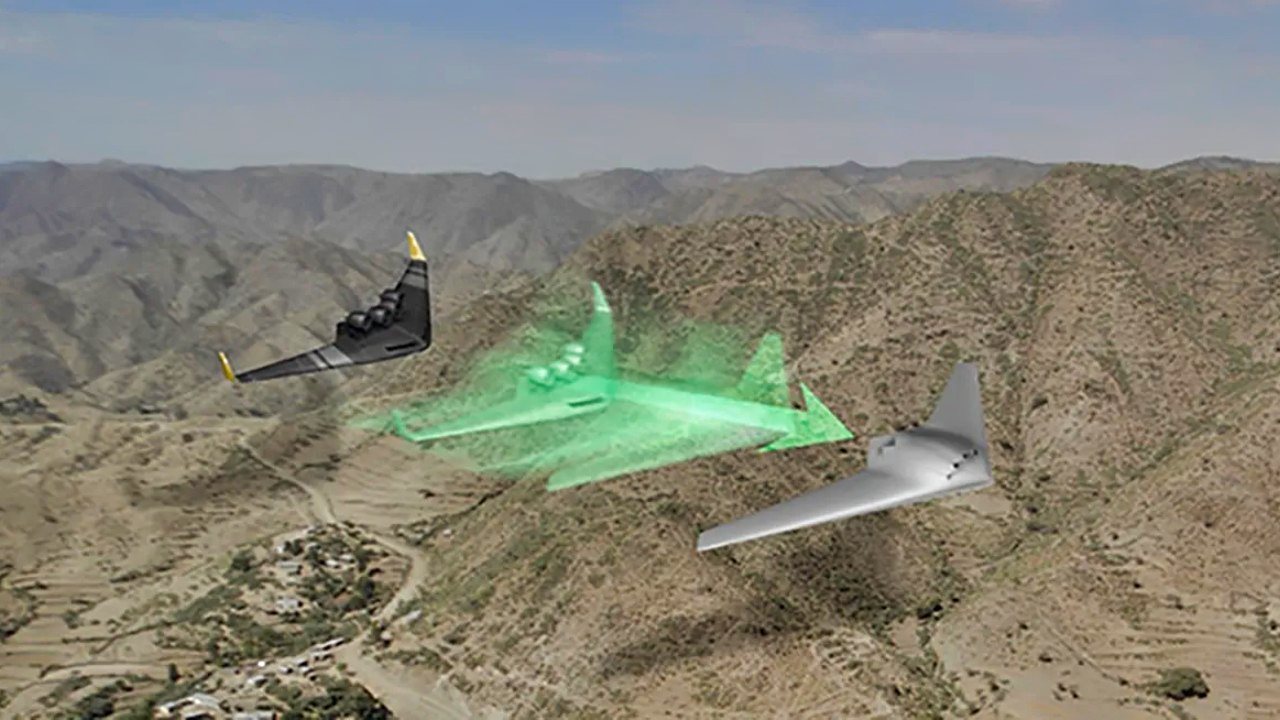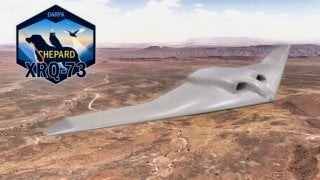XRQ-73 SHEPARD: The 'Mad Scientists' at DARPA Built a New Stealth Spy Drone
The Defense Advanced Research Projects Agency (DARPA) and Northrop Grumman have announced the XRQ-73 SHEPARD, a new unmanned aerial system designed for intelligence, surveillance, and reconnaissance (ISR) missions.
Summary and Key Points: The Defense Advanced Research Projects Agency (DARPA) and Northrop Grumman have announced the XRQ-73 SHEPARD, a new unmanned aerial system designed for intelligence, surveillance, and reconnaissance (ISR) missions.

-The XRQ-73, part of the Series Hybrid Electric Propulsion Aircraft Demonstration program, aims to operate in near-peer adversarial environments and enhance battlefield situational awareness.
-This Group 3 UAV weighs around 1,250 pounds, can reach speeds of 100-250 knots, and has an operational ceiling of 18,000 feet. Initial flight tests are scheduled for 2024, following delays from the previous year.
DARPA and Northrop Grumman Unveil New XRQ-73 SHEPARD Spy Drone
This week, the U.S. military’s research agency announced a new spy aircraft.
The Defense Advanced Research Projects Agency and Northrop Grumman announced the XRQ-73 SHEPARD aircraft on June 24. The unmanned aerial system is set to take to the skies later this year.
The XRQ-73 SHEPARD
Officially an X-plane, the XRQ-73 SHEPARD – which stands for Series Hybrid Electric Propulsion Aircraft Demonstration – is the fruit of a program to develop a new intelligence, surveillance, and reconnaissance (ISR) aircraft for the U.S. military.
"The idea behind a DARPA X-prime program is to take emerging technologies and burn down system-level integration risks to quickly mature a new missionized long endurance aircraft design that can be fielded quickly," Steve Komadina, SHEPARD program manager, said in a press release.
The SHEPARD program aims to create an operational ISR platform able to survive and perform in a near-peer operational environment. ISR aircraft provide situational awareness to commanders at all levels. This better understanding of the battlefield can often be the difference between success and disaster.
During the Global War on Terrorism in Iraq, Afghanistan, and Syria, the U.S. military relied on good ISR. Indeed, it was uncommon for American units to operate outside the cover of a manned ISR aircraft or drone.
But a potential conflict with a near-peer adversary like China or Russia would require new systems. Any new spy plane needs to operate in a non-permissive environment and provide critical ISR capabilities to commanders on the ground.
"The SHEPARD program is maturing a specific propulsion architecture and power class as an exemplar of potential benefits for the Department of Defense,” the DARPA official added.
When it comes to specific capabilities, DARPA has been reasonably cautious, only revealing that the XRQ-73 SHEPARD is a “Group 3” unmanned aerial system. It weighs approximately 1,250 pounds, can reach speeds between 100 and 250 knots (about 115 to 290 miles per hour). It has a maximum operational ceiling of 18,000 feet.
Alongside DARPA, Northrop Grumman’s Advanced Aeronautics Systems and a smattering of other companies are working on the XRQ-73 SHEPARD.
DARPA has been working on the unmanned aerial system for about four years and expects to have a capability ready soon. Initially, the XRQ-73 SHEPARD was supposed to fly last year. For unspecified reasons, DARPA delayed initial flight testing to 2024.
“SHEPARD is an "X-prime" program, leveraging the series hybrid electric architecture and some of the component technologies from the earlier AFRL/IARPA Great Horned Owl (GHO) project,” DARPA stated.
In an era of intense competition between the U.S. and its adversaries, mainly China, ambitious programs such as the XRQ-73 SHEPARD promise to provide new capabilities that will be necessary to prevail in a future large-scale conflict.
At the same time, they increase the overall deterrence of the U.S. military and might help to avert a conflict altogether.
About the Author
Stavros Atlamazoglou is a seasoned defense journalist specializing in special operations and a Hellenic Army veteran (national service with the 575th Marine Battalion and Army HQ). He holds a BA from the Johns Hopkins University and an MA from the Johns Hopkins’ School of Advanced International Studies (SAIS). His work has been featured in Business Insider, Sandboxx, and SOFREP.
All images are from DARPA.
From the Vault
Russia Freaked Out: Why the U.S. Navy 'Unretired' the Iowa-Class Battleships
Battleship vs. Battlecruiser: Iowa-Class vs. Russia's Kirov-Class (Who Wins?)


